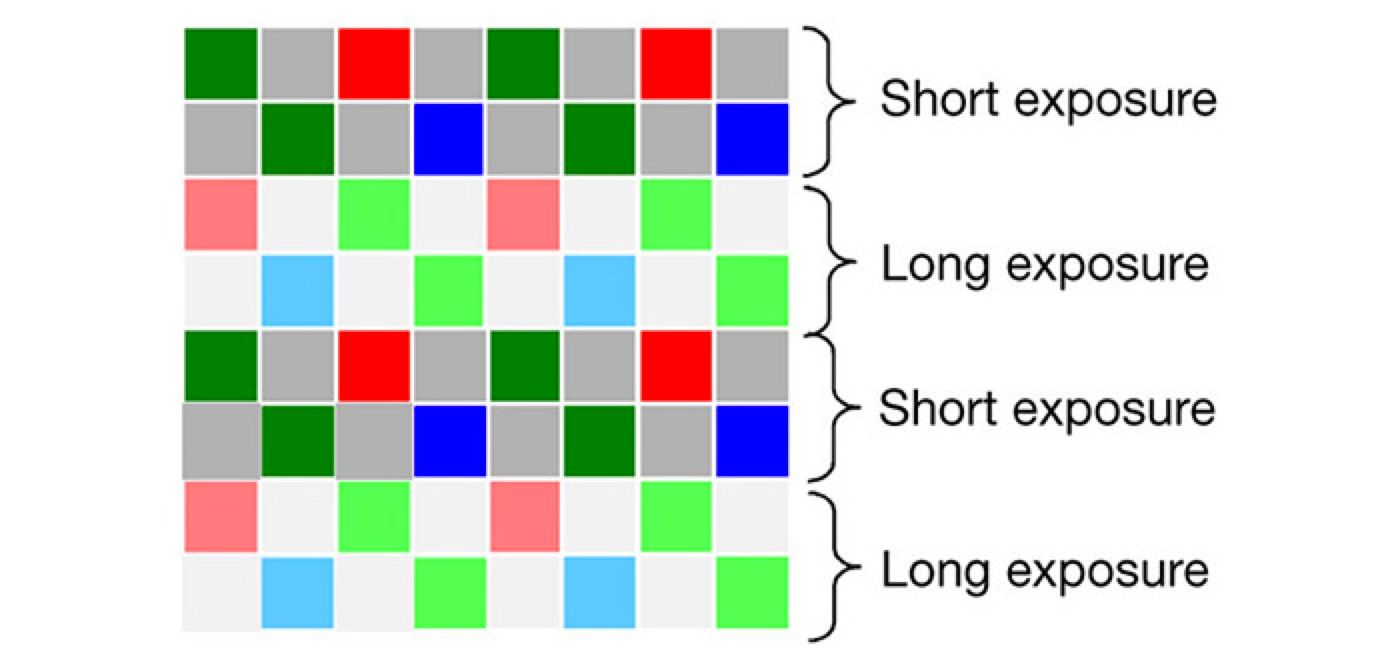Sony A7000 (+ X-PRO2?) with better dyamic range than the Full Frame A7 series thanks to native “on sensor HDR”! src-SAR

Ok, for now it’s “just” a rumor… but a pretty exciting one ;) .
According to SonyAlphaRumors here, the Sony A7000 (and therefore maybe also the Fuji X-PRO2) could be the first mirrorless cameras of the world featuring a native “on sensor HDR”.
SAR says that “both, stills and video are capable of 15.5 stops of dynamic range!”
15.5 stops!!! That’s more than any Sony Full Frame A7 series camera! In fact, DxO calculates the following DR:
– Sony A7s: 13.2 f-stops
– Sony A7: 14.2 f-stops
– Sony A7r: 14.1 f-stops
– X-Trans 1 (X-Pro1/X-E1) has about 9.5 f-stops – source
– X-Trans 2 (X-T1, X-E2 & Co) has about 13 f-stops according to measurments of Jordan (Admiringlight) and also imaging-resource, which puts it slightly ahead of the A6000.
If the rumor is right, then this feature would make the new APS-C sensor generation even more advanced than the latest Full Frame sensor of the brand new Sony A7rII.
And I’m curious to see if the special X-Trans CFA will give us even more than the rumored 15.5 f-stops of the A7000.
HOW DOES IT WORK?
According to SAR, a similar technology is already used in the Xperia Z smartphone for video recording. Sony describes it here:
HDR for VIDEO: To achieve true HDR video recording, the advanced Exmor RS camera sensor in Xperia Z changes the exposure every two lines of pixels. This creates a spatially varying exposure (SVE) array image, which is then used to make an image that is perfectly exposed in both dark and light areas. To simplify the concept, for each frame the camera shoots one picture with two different exposure levels at the same time, one light and one dark. Then, an intelligent software algorithm is used to combine (synthesize) the two shots into one picture, pixel by pixel. This allows you to see the details of both the dark and the bright parts of the picture.
And for Stills? Maybe it works as described in this Sony Patent here, that shows a sensor, where every pixel is exposed differently. So, the pixels in a dark area would become “long exposure pixels” and those in bright areas “short exposure pixels”. But the rumor published on SAR does not specify if it works this way.
In the past, Fuji used the EXR sensor (which can be found in the X-S1 and X10) to expand dynamic range. But in the battle between EXR and X-TRANS, Fuji went for the latter one.
Fuji currently offers the efficient DR expansion feature (DR200 = 1 stop underexposure / DR400 = 2 stops underexposure). The extra Dynamic Range is stored into the RAW files and allows you to recover a lot of highlight detail in post.
It’s time to update 2 of the 3 polls launched after my Sony A7000 sensor specs rumor of last week.
Push the READ MORE button to read why any Sony A7000 sensor rumor is potentially interesting also for Fuji X-shooters
Here is what we know:
Fuji’s current X-TRANS APS-C sensor is manufactured by Sony (the 2/3 sensors are made by Toshiba)
As soon as Sony implements a brand new sensor in one of their cameras, Fuji has to wait a few months before using it.
Here is what we don’t know:
We don’t know if Fuji will buy the sensor for the Fuji X-PRO2 and X-T2 from Sony.
We don’t know if Fuji is waiting for the new Sony A7000 sensor (according to our rumors with X-TRANS CFA)
Here are the rumors:
The Sony A7000 has been delayed from late spring to late summer. At the same time, the Fuji X-PRO2 has been delayed from late 2015 to 2016.
So, no rumor, it’s all just a more or less plausible speculation that the Fuji X-PRO2 will sport the same new sensor that Sony is developing for the Sony A7000. But if it does, than any rumor regarding the Sony A7000 is interesting also for us X-shooters.

